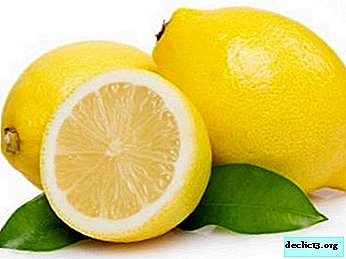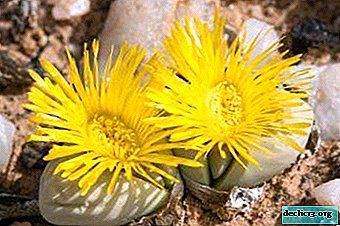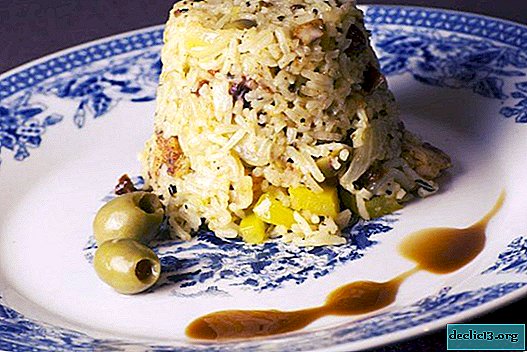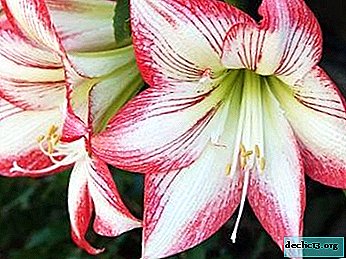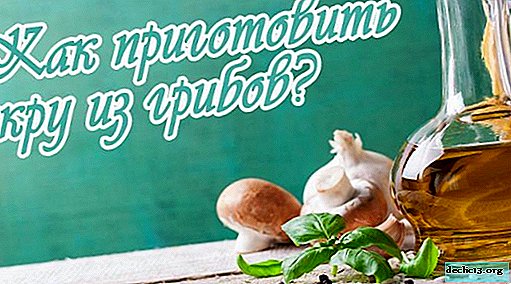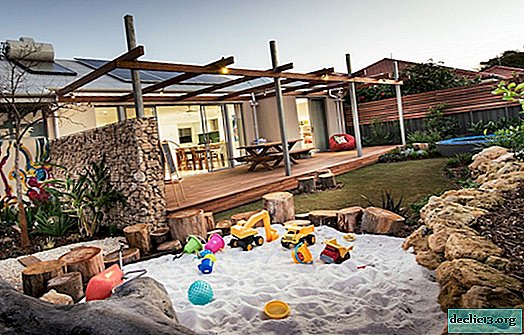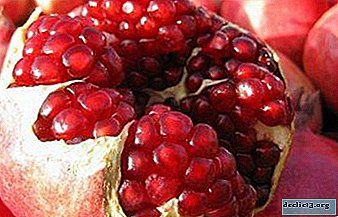The first spring vegetable is F1 Cherriet radish. Features of cultivation, advantages and disadvantages
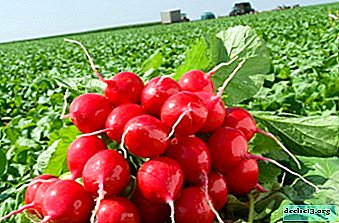
Radish is traditionally one of the first spring vegetables to give a charge of fresh vitamins with the onset of heat.
Thanks to breeders, there are new hybrid varieties that can be grown even in the winter in greenhouses and greenhouses.
Radish Cherriet F1 - just such a plant. Moreover, due to the small shooting, this radish also tolerates summer heat.
Characteristics and description of the variety
The early ripe large-fruited hybrid radish Cherriet F1, under favorable conditions and good care, can give the first crop in 20 days after the appearance of the first seedlings. In the State Register of the Russian Federation declared as a radish variety with a maturity of 30 days, intended for cultivation on an industrial scale and sowing on household plots.
Appearance
Radish varieties Cherriet F1 looks quite traditional and similar to plants of other varieties:

- radish leaf has the shape of a mirror-shaped egg, narrowed to the base;
- bright gray-green leaves grow in the form of a rosette quite compactly, partially upward, slightly to the sides;
- petioles of intense blue-violet color;
- the shape of the root crop is round, the head is convex;
- fruit color is traditional, red;
- inside the radish fruit has a snowy white juicy pulp;
- the flesh is tender, even in unfavorable conditions for development does not become flabby.
Early or mid-season?
Variety Cherriet is positioned by breeders as early ripe, since its ripening period is 20-25 days. But, judging by the characteristics declared in the State Register, as well as by the reviews of vegetable growers, it can be considered mid-season, as well as 30 days after planting, the plant gives a good harvest.
Experts explain this discrepancy in the assessment of Cherryt radish by the difference in climate and growing conditions, which affect the timing of the appearance of the fruit. Whereas on fertile soils of the sunny south of Russia, crops can indeed be harvested in just three weeks, in the northern and low-sunny areas, the ripening time is lengthened.
Productivity
The average performance of Cherryt radish is a ripe fruit with a diameter of 3-6 cm weighing 25-30 grams. When harvesting, large fruits weighing up to 40 grams will not be uncommon. But even a large-sized radish, unlike other varieties, will not have voids inside. The juiciness and freshness of even overgrown fruits is Cherriet's selection merit.
Vegetable growers prefer Cherriet variety for its high yield, the average rate of which is from 2.5 to 2.7 kg per square meter.
On good soil, with careful care, the yield can be on average more than three kilograms per square meter.Where to grow - in a greenhouse or on the street?
 Radish Cherriet F1 is not as sensitive to daylight hours as other varieties of this plant, but does not like weak or diffuse lighting. Therefore, it is preferable to grow it in open ground.
Radish Cherriet F1 is not as sensitive to daylight hours as other varieties of this plant, but does not like weak or diffuse lighting. Therefore, it is preferable to grow it in open ground.
In the greenhouse, it also grows well if you show enough attention to it. At the same time, planting dates are extended, but the ripening period is increased. But even at home on a loggia or balcony with conditions comfortable for the variety, a good harvest can be obtained.
Traditionally, Cririet F1 has been cultivated in warm climates since the beginning of the third week of March until the last days of November. To achieve a completely positive result, it is recommended to sow it in early April. Although success stories are known for winter crops.
Disease resistance
The plant was bred using special selection and, like most varieties of formula F1, has high resistance to various diseases. In particular, Cririet practically did not affect:
- Fusarium wilt;
- fungus disease "black leg";
- disease of the fungal form of the keel.
Ripening period
The timing of the harvest of Cherryt radish varies from 18 to 40 days, depending on the conditions in which it was grown.
What soil does it prefer?
Radish Cherriet F1 should be planted in fertile loose and light soil. Neutral or slightly acidic sandy loamy soil is most suitable. If the soil is heavy, you need to lighten it by adding sand and peat. Fertility is increased by making compost and humus. Acidity of the soil is allowed from 6.5 to 6.8 pH. With soil acidification, the problem is solved with ash and lime.
Attention: manure, litter, nitrogen mixtures and any fresh organic matter are detrimental to the Cherriet F1 radish.The soil should not be too dry or too moist. Regular loosening and mulching are recommended.
The precursors of radishes should not be cruciferous, for example:

- swede;
- mustard;
- cabbage;
- Levka;
- rape;
- radish;
- turnip.
The best crops after which radishes are planted are:
- legumes;
- potatoes;
- cucumbers.
At the same time, they recommend sowing onions and carrots in the neighborhood.
Breeding History
The hybrid Cherriet F1 radish variety was bred by Sakata Seeds Corporation (Japan). This happened at the beginning of the century. In Russia, Cririet has been allowed to grow since 2007, when it was added to the State Register of the Russian Federation. The applicant for registration as an originator is France-registered Sakata Vegetables Europe S.A.S., a subsidiary of a Japanese breeder.
What is the difference from other types of radishes?
Firstly, Cherryt differs from other varieties in its taste and marketability. Perhaps, there is no other type of this fruit having such an excellent and memorable taste. The sharpness inherent in radish as a type of vegetable in Cherriet variety is manifested in moderation, quite average in intensity.
Advantages and disadvantages
Cherriet radish variety has a lot of advantages. The main ones are:
- easy to care;
- large root crop;
- does not release "extra" flower stalks, growth goes mainly to the edible root part;
- tolerates frosts;
- insensitive to daylight hours;
- even overgrown fruits have no voids;
- compact size sheet socket;
- gives a high yield;
- resistant to disease.
With a lot of positive characteristics, radish Cherriet has some disadvantages:
- it requires sunlight;
- fertilizing is complicated due to the structure of the plant;
- when applying fertilizers and processing from pests due to rapid ripening, the fruit may contain residual signs of chemicals and fertilizers.
Why and where is it used?
Great in fresh salads and light snacks. It is eaten raw fresh. It is rarely pickled or made with preserves.
Features
 The main feature of this radish is its aversion to shooting and flowering. Even in hot weather with a long daylight, i.e. in the summer, Cririet does not form many arrows, like other varieties of radish. He does not spend energy on flowering. The plant continues to develop towards the underground, giving a consistently high yield. Due to this feature, planting and growing radishes are possible not only in the off-season. It can be considered a truly all-season grade.
The main feature of this radish is its aversion to shooting and flowering. Even in hot weather with a long daylight, i.e. in the summer, Cririet does not form many arrows, like other varieties of radish. He does not spend energy on flowering. The plant continues to develop towards the underground, giving a consistently high yield. Due to this feature, planting and growing radishes are possible not only in the off-season. It can be considered a truly all-season grade.
Another feature of the variety is its hybridity, as indicated by the F1 formula. This means that it is impossible to obtain second-generation seed material that produces offspring with exactly the same remarkable characteristics. Every year you have to purchase new seeds. Therefore, you need to be responsible in choosing a supplier.
Seed growing
- Sowing. Not very dense, so that you do not have to thin out the grown plants. A distance of 4 cm between plants and 15 cm between beds is recommended. Planting depth 1-2 cm, depending on the lightness and friability of the soil.
- Watering. Radish requires enough moisture, but does not tolerate flooding. Watering is recommended with warm water.
- Top dressing. It is believed that it is not needed, since the growing season is short. It is enough that the soil was fertilized before sowing. If necessary, feed for 7-10 days. If you overfeed, the growth will go to the tops, and not to the fruits.
Harvesting and storage
Cherryt radish tops, although low, are so strong that radishes are harvested without digging. The plant is pulled from the soil by the leaves.
Interesting: It is believed that radish tops contain much more nutrients than root vegetables. There are recipes with its use.Before transportation and storage, it is necessary to cut the roots and cut off the tops to a length of 2-3 cm from the fruit. Radish is resistant to damage during transport. Long-term storage of Cririet is allowed - in the refrigerator, the crop does not deteriorate and does not fade until 30 days.
Diseases and Pests
Genetically resistant to serious diseases, radish cherryriet may be attacked by cruciferous flea. This pest from the family of leaf-eating beetles is able to destroy the entire planting in a couple of days, damaging the top layer of foliage or eating whole sections of tops. At the first signs of its occurrence, urgent processing by means intended for destruction is required.
Radish variety Cherriet F1 is a newcomer to Russian vegetable gardens. But already appreciated. You can recommend it to both experienced and novice growers. If you follow the recommendations from this article, the task of obtaining a rich harvest of delicious radishes will be perfectly solved.
Interesting video
We offer you to watch a video with a description and characteristics of the Cherriet F1 radish variety:






